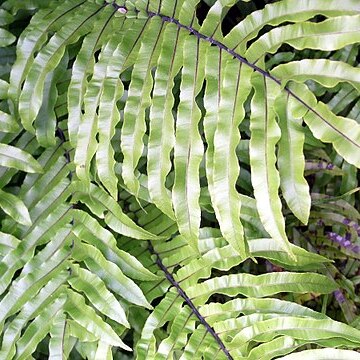Rhizome stout, shortly creeping; densely clad in pale brown ovate-to subulate-attenuate paleae c. 1 cm. long; stipites crowded. Stipes 5-15 cm. long, slender to rather stout, paleate at base or throughout. Rhachis slender to rather stout, ± paleate, grooved; bearing 3-5 pairs of subopp. lateral pinnae. Sterile lamina 12-15 × 6-8 cm., coriac., dull green above, paler below. Lowest pinnae not much shorter than remainder, up to 3 × 1·5 cm. Larger pinnae 3·5-5 × 1·5-2 cm., oblong, obtuse to subacute, serrate; base truncate to subcordate, attached by costa; costa paleate to nude. Terminal pinna lanceolate, acuminate, up to 10 × 2 cm. Fertile lamina up to 12 × 8 cm.; pinnae distant, up to 6 cm. long, linear.

